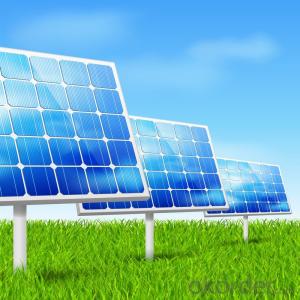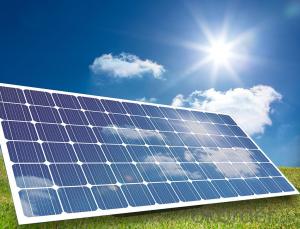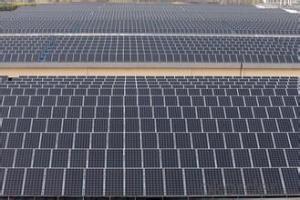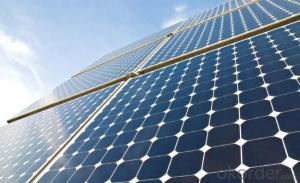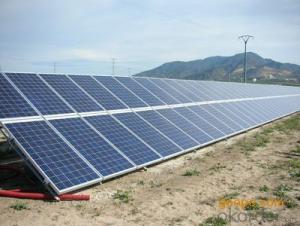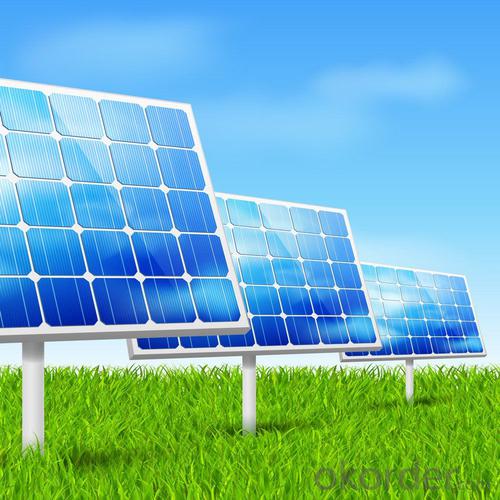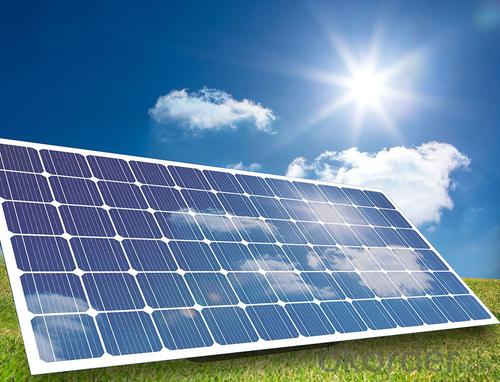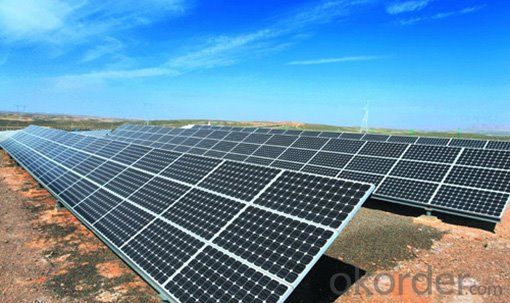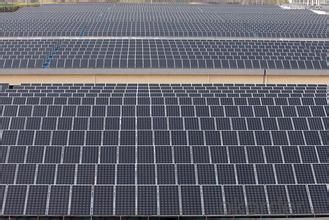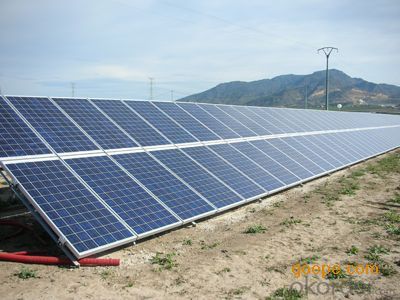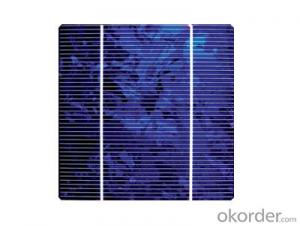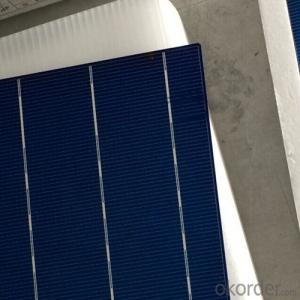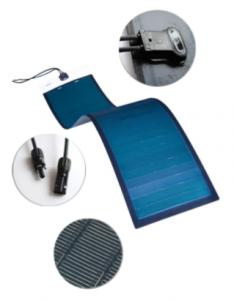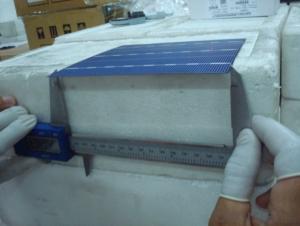Dye Sensitive Solar Cells PhotoVoltaic Thin Film Flexible Amorphous Solar Module
- Loading Port:
- Shanghai
- Payment Terms:
- TT OR LC
- Min Order Qty:
- 11 watt
- Supply Capability:
- 1111111 watt/month
OKorder Service Pledge
OKorder Financial Service
You Might Also Like
1.Structure of Solar Module Description
The solar module is an off-gird solar power generator, designed to provide stable and reliable electricity to homes and communities without access to grid electricity or to those regions where are short of power or even without power. The solar module is convenient to move, easy to set-up with reliable performance, making it ideal for situations where emergency power is required. It is an ideal & reliable energy source for a wide variety of applications, ranging from lighting , radios, fans ,televisions ,computers ,refrigerator. The USB port is compatible with all 5V-USB charged devices. It can also act as a back-up power source during emergency situations.
2.Main Features of the Solar Module
1).High conversion efficiencies resulting in superior power output performance.
2).Outstanding power output even in low light or high temperature conditions
3).Optimized design for ease of soldering and lamination
4).Long-term stability,reliability and performance
3.Solar Module Images
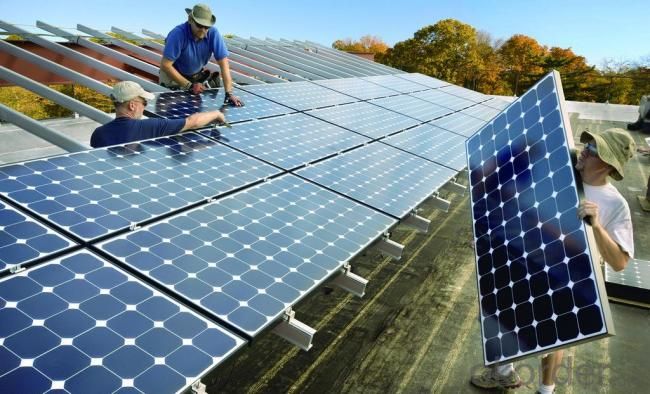
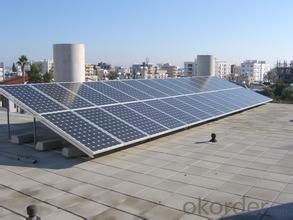
4.Solar Module Specification
| Type | PVL72 11L | ||
| Maximum Power | Pmax | (W) | 72 |
| Voltage at Pmax | Vmp | (V) | 16.5 |
| Current at Pmax | Imp | (A) | 4.36 |
| Short-circuit Current | Isc | (A) | 5.3 |
| Open-circuit Voltage | Voc | (V) | 23.1 |
| Maximum Power | Pmax | (W) | 56 |
| Voltage at Pmax | Vmp | (V) | 15.4 |
| Current at Pmax | Imp | (A) | 3.6 |
| Short-circuit Current | Isc | (A) | 4.3 |
| Open-circuit Voltage | Voc | (V) | 21.1 |
| Length | mm | 2849 | |
| Width | mm | 394 | |
| Area | A | m² | 1.12 |
| Power density unit area | ρp-A | W/m² | 64.14 |
| Weight | W | Kg | 3.9 |
| Power density unit weight | ρp-w | W/Kg | 18.46 |
| Cell Area (356×239) | Acell | m² | 0.9359 |
| Available Area (336×239) | AAA | m² | 0.8833 |
| Available Area Efficiency | ηAAE | % | 8.15% |
| Module Efficiency | ηmodul | % | 6.4% |
5.FAQ of Solar Module
1). Q: Are you a factory or trading company?
A: We are a factory.
2). Q: Where is your factory located? How can I visit there?
A: Our factory is located in Jiangyin, Jiangsu, China, near Shanghai. You are warmly welcomed to visit us!
3). Q: How can I get some samples?
A: Please connect me for samples
4). Q: Can the price be cheaper?
A: Of course, you will be offered a good discount for big amount.
- Q: Can solar cells be used in remote areas with no grid access?
- Yes, solar cells can be used in remote areas with no grid access. Solar cells, also known as photovoltaic (PV) cells, convert sunlight into electricity. They can be installed in off-grid locations where there is no access to a power grid, allowing the generation of electricity for various purposes. Solar cells are particularly beneficial in remote areas as they offer a sustainable and reliable source of clean energy, reducing the dependence on traditional fossil fuels and enhancing energy independence.
- Q: PV: the battery to the battery charge problem
- Yes, for example: the battery voltage is 12V, with a 18V solar panels connected to the battery voltage will be slightly higher than the 12V voltage, such as 12.2V look, so the actual working voltage of the solar panels by the
- Q: What is the typical size and weight of a solar cell?
- The typical size of a solar cell ranges from a few square centimeters to several square meters, depending on its application. In terms of weight, solar cells are generally lightweight, weighing anywhere from a few grams to a few kilograms, again depending on their size and technology.
- Q: Can solar cells be used to power emergency lighting systems?
- Yes, solar cells can be used to power emergency lighting systems. Solar cells convert sunlight into electricity, which can be stored in batteries for later use. This makes them a reliable and sustainable source of power for emergency lighting, ensuring that they will continue to function even during power outages or other emergencies.
- Q: How do solar cells perform in low-light conditions?
- Solar cells perform less efficiently in low-light conditions compared to bright sunlight. This is because they rely on the energy from photons in sunlight to generate electricity. In low-light conditions, such as on cloudy days or during sunrise and sunset, the number of photons reaching the solar cells decreases. As a result, the conversion of light energy into electrical energy is reduced, leading to lower power output. However, advancements in solar cell technology have improved their performance in low-light conditions, enabling them to generate some electricity even in dim lighting.
- Q: Can solar cells be used for aerospace applications?
- Yes, solar cells can be used for aerospace applications. They are commonly used in satellites and space probes to provide power for various systems and instruments. Solar cells are lightweight, reliable, and can efficiently convert sunlight into electricity, making them ideal for powering spacecraft in the vastness of space where traditional power sources are not feasible.
- Q: Can solar cells be used for powering remote weather monitoring stations?
- Yes, solar cells can be effectively used for powering remote weather monitoring stations. Solar cells have the capability to convert sunlight into electrical energy, making them an ideal and sustainable power source for remote locations. They can provide a reliable and continuous power supply to weather monitoring stations, allowing them to operate independently without the need for grid connections or frequent battery replacements. Additionally, solar cells are environmentally friendly and cost-effective in the long run, making them a popular choice for powering off-grid weather monitoring stations.
- Q: Can solar cells be used for powering oil rigs?
- Yes, solar cells can be used for powering oil rigs. Solar panels can harness sunlight to generate electricity, which can be utilized to power various equipment and systems on oil rigs, reducing reliance on traditional fossil fuel-based generators and minimizing environmental impact. However, the feasibility and effectiveness of implementing solar power on oil rigs depend on factors such as energy requirements, geographic location, available space, and cost considerations.
- Q: Can solar cells be used to power remote disaster response systems?
- Yes, solar cells can be used to power remote disaster response systems. Solar cells, also known as photovoltaic cells, convert sunlight into electricity, providing a reliable and renewable energy source. Since disaster response systems often operate in remote or inaccessible areas, solar power is an ideal solution as it eliminates the need for traditional electrical infrastructure. Solar panels can be installed on rooftops, portable units, or even integrated into the design of disaster response equipment, ensuring continuous power supply for communication devices, lighting, medical equipment, and other critical systems during disaster relief operations.
- Q: How does a solar cell raise industrial efficiency?
- The solar cell's energy supply is environmentally friendly. Therefore, the efficiency is higher.
Send your message to us
Dye Sensitive Solar Cells PhotoVoltaic Thin Film Flexible Amorphous Solar Module
- Loading Port:
- Shanghai
- Payment Terms:
- TT OR LC
- Min Order Qty:
- 11 watt
- Supply Capability:
- 1111111 watt/month
OKorder Service Pledge
OKorder Financial Service
Similar products
Hot products
Hot Searches
Related keywords
